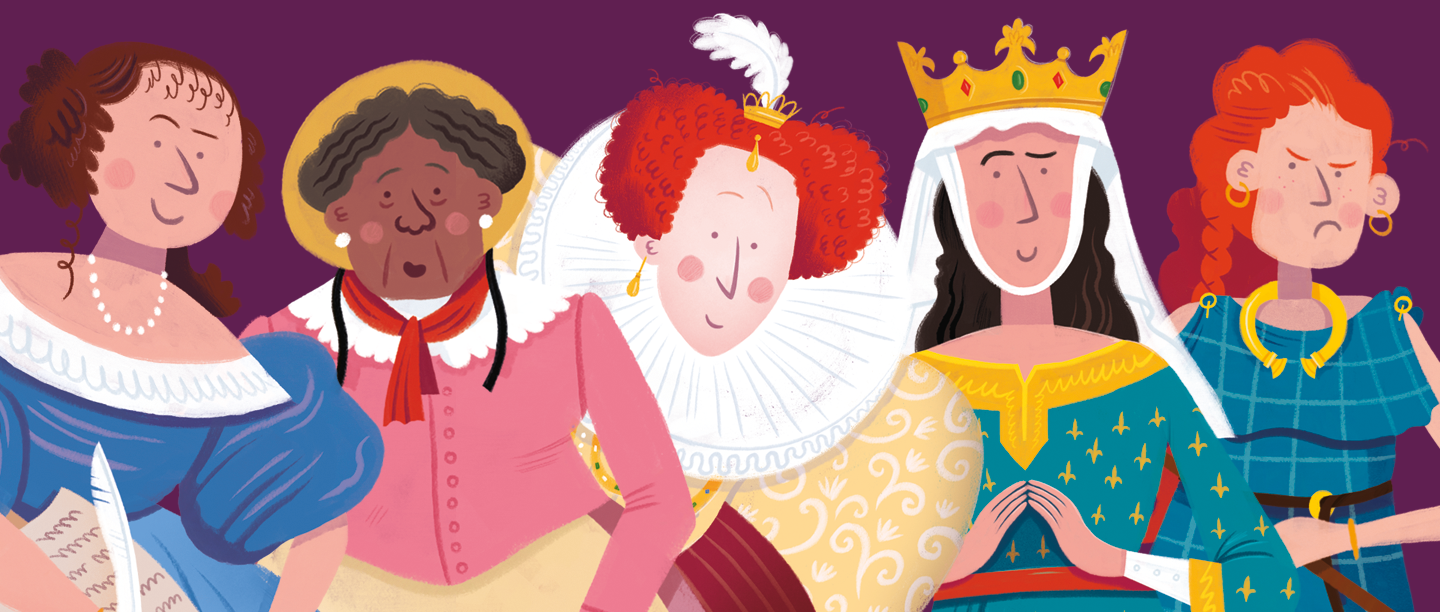Boudica
Queen of the Iceni and leader of a rebellion against Roman rule. (Died AD 60-61)
Boudica lived in the early years of Roman rule over Britain. She was married to Prasutagus, king of the Iceni, a British tribe allied with Rome. When he died, the Romans tried to take control of the Iceni's lands. Boudica led a rebellion and destroyed the cities of Colchester, London and St Albans.
The Roman army eventually defeated Boudica's army and she died soon afterwards. Boudica has become a symbol of resistance to tyranny. London and St Albans were rebuilt after the rebellion and parts of their walls still stand today.
Eleanor of Aquitaine
Powerful queen of France and England, wife and mother of kings and queens. (1122-1204)
In a long life, Eleanor played a key role in politics across Europe. Her first husband was the king of France, but their marriage ended in 1152. Then she married Henry Plantagenet, who became King Henry II of England. They had five sons and three daughters. Henry and Eleanor ruled land from Ireland to the Pyrenees.
In 1173, Henry imprisoned her for supporting a rebellion of their sons against him. She spent a lot of time as a prisoner at Old Sarum Castle, where she was given fine clothes and good food. She was released in 1189 and lived to see her sons Richard I and John become kings.
Elizabeth I
The last Tudor monarch. (1536-1603)
Elizabeth was the daughter of Henry VIII and Anne Boleyn. Life wasn't always easy for Elizabeth when she was young — she even spent a few months as a prisoner. She became queen in 1558 aged 25. She was a powerful ruler. She could also be an inspiring leader — in 1588, she was the figurehead of resistance to the Spanish Armada.
She never married but she had a close relationship with Robert Dudley. In 1575, Dudley hosted her for 19 days at Kenilworth Castle in Warwickshire. He tried to impress her with festivities and let off fireworks that could be heard 20 miles away!
Margaret Cavendish
Trailblazing female author, philosopher, poet and playwright. (1623-1673)
Margaret Cavendish was the Duchess of Newcastle. She was also a scientist, philosopher and writer. She was one of the most published authors of the 17th century. She wrote The Blazing World, which was one of the first ever sci-fi books. In the book she mentions one of her homes, Bolsover Castle. She was also the first woman to go to a meeting of the Royal Society — a group for scientists.
Mary Seacole
Nurse who cared for soldiers during the Crimean War. (1805-1881)
Born in Jamaica, Mary Seacole learned herbal medicine and healing from her mother. She nursed patients during epidemics of cholera, a deadly disease. She came to England and hoped to go to Crimea with Florence Nightingale's nurses. But they wouldn't let her, so she travelled on her own. She opened a 'British hotel' where soldiers were fed and cared for. She is even said to have treated soldiers on the battlefield. She came back to London and stayed in Soho, where she has a blue plaque.
More stories to discover
Find out about the lives of women in the past with this collection of videos. Discover what it was like to be a medieval merchant, what it took to run a grand Georgian house, how to be a Victorian cook and more. Plus, look out for models to make and recipes for you to try at home!
